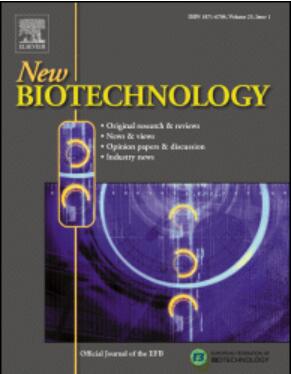黄瓜根际微生物群落的多样性和关键物种:揭示其在黄瓜生长和微生物群落中的作用
IF 4.9
2区 生物学
Q1 BIOCHEMICAL RESEARCH METHODS
引用次数: 0
摘要
研究农业生态系统与微生物群之间的相互关系对于实现农业可持续发展至关重要。特别是,根际微生物群与作物之间的关系对农业生态系统的健康和稳定至关重要。本研究评价了黄瓜根际微生物群落的多样性和关键物种,探讨了它们在黄瓜生长和微生物群落调节中的作用。在高产地区不同地点、不同栽培方式的黄瓜根际和块土中采集土壤样品108份。对这些样品进行分析,研究不同栽培方式与作物根际微生物之间的相互关系。结果受微生境(根际和块土)和地理位置的影响,土壤微生物群落存在显著的区域差异。常见细菌如假单胞菌、鞘氨单胞菌、溶菌菌和罗丹诺杆菌数量最多,并通过共现网络与其他几种细菌表现出很强的相关性。此外,黄杆菌和芽孢杆菌被确定为根瘤菌群落结构的关键种。综合微生物群落和盆栽试验证实,这两个关键物种可以丰富土壤微生物群,促进黄瓜生长。黄杆菌可能通过调节根际微生物群落来促进黄瓜生长,芽孢杆菌可能通过稳定根际微生物生物量,进一步提高养分循环效率,提高系统稳定性来影响黄瓜生长,进而影响农业生态系统。结论研究表明,特定的关键物种对黄瓜根际微生物群的形成和植物生长具有重要作用。这些结果提供了对农业生态系统-微生物相互关系的见解,并为优化农业管理策略提供了潜在的基础。本文章由计算机程序翻译,如有差异,请以英文原文为准。
The diversity and keystone species of cucumber rhizosphere microbiome: Unveiling their role in driving cucumber growth and microbial communities
Background
Studying the interrelationship between agroecosystems and the microbiome is essential in achieving sustainable agricultural development. In particular, the relationship between the rhizosphere microbiome and crops is critical to the health and stability of agroecosystems. This study evaluated the diversity and keystone species of the cucumber rhizosphere microbiome and investigated their contributing role in cucumber growth and microbial community regulation. A total of 108 soil samples were collected from the rhizosphere and bulk soil of cucumber crops in different locations and under different cultivation modes in a high-yield area. These samples were analyzed to study the interrelationships between different cultivation modes and crop rhizosphere microorganisms.
Results
The results revealed significant regional differences in microbial communities due to microhabitat (rhizosphere and bulk soil) and geographic location. Common bacteria such as Pseudomonas, Sphingomonas, Lysobacter and Rhodanobacter were the most abundant and showed strong correlations with several other bacteria through co-occurrence networking. In addition, Flavobacterium sp. and Bacillus sp. were identified as keystone species for the rhizobia community structure. Synthetic microbial communities and pot experiments confirmed that these two keystone species could enrich the soil microbime and promote cucumber growth. Flavobacterium sp. may promote cucumber growth by regulating the rhizosphere microbial community while Bacillus sp. may influence cucumber growth by stabilizing the rhizosphere microbial biomass, further enhancing nutrient cycling efficiency and improving system stability, which in turn affected the agroecosystem.
Conclusions
Our study demonstrates that specific keystone species are important in shaping the cucumber rhizosphere microbiome and plant growth. These results provide insights into agroecosystem-microbe interrelationships and provide a potential basis for optimizing agricultural management strategies.
求助全文
通过发布文献求助,成功后即可免费获取论文全文。
去求助
来源期刊

New biotechnology
生物-生化研究方法
CiteScore
11.40
自引率
1.90%
发文量
77
审稿时长
1 months
期刊介绍:
New Biotechnology is the official journal of the European Federation of Biotechnology (EFB) and is published bimonthly. It covers both the science of biotechnology and its surrounding political, business and financial milieu. The journal publishes peer-reviewed basic research papers, authoritative reviews, feature articles and opinions in all areas of biotechnology. It reflects the full diversity of current biotechnology science, particularly those advances in research and practice that open opportunities for exploitation of knowledge, commercially or otherwise, together with news, discussion and comment on broader issues of general interest and concern. The outlook is fully international.
The scope of the journal includes the research, industrial and commercial aspects of biotechnology, in areas such as: Healthcare and Pharmaceuticals; Food and Agriculture; Biofuels; Genetic Engineering and Molecular Biology; Genomics and Synthetic Biology; Nanotechnology; Environment and Biodiversity; Biocatalysis; Bioremediation; Process engineering.
 求助内容:
求助内容: 应助结果提醒方式:
应助结果提醒方式:


